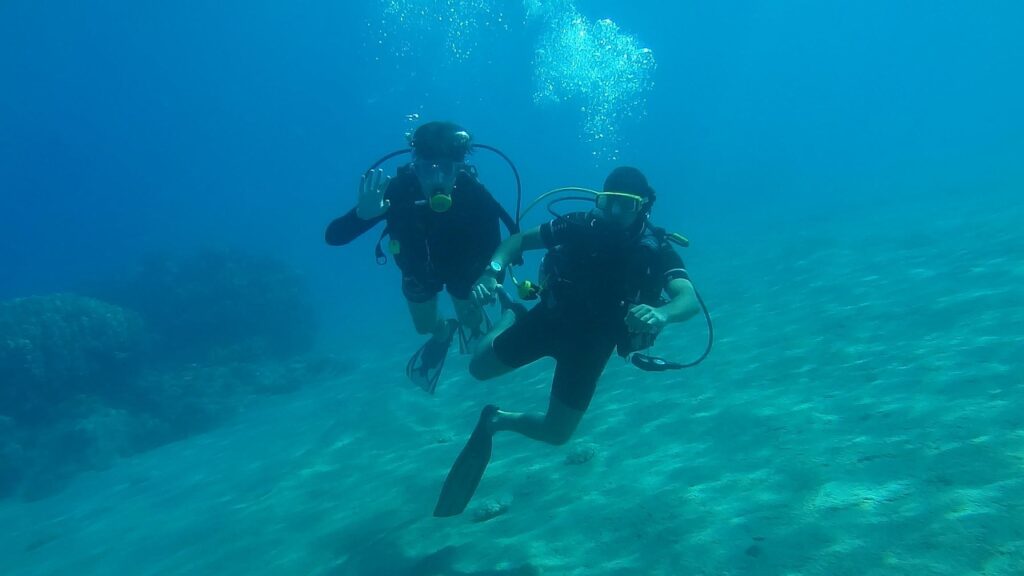As a La Jolla-based scuba diving guide and marine life expert, I’ve spent years exploring the underwater world off San Diego’s coast, and few creatures spark as much intrigue among divers as the tope shark (Galeorhinus galeus). Known locally as soupfin sharks, these sleek, mid-sized predators roam the waters of the La Jolla Underwater Park Ecological Reserve, including the depths of La Jolla Canyon and the kelp-strewn edges of La Jolla Shores. While they’re not as flashy as sea lions or as common as leopard sharks, tope sharks offer a rare and thrilling encounter for those lucky enough to cross their path.
What Is a Tope Shark? Identifying La Jolla’s Elusive Swimmers
The tope shark belongs to the houndshark family (Triakidae), known for slender builds and stealthy hunting tactics. Measuring 4 to 6 feet (1.2–1.8 meters) in length and weighing up to 100 pounds (45 kg), they’re built for speed and agility, with a pointed snout, streamlined body, and a crescent-shaped tail fin. Their grayish-brown backs and pale underbellies make them well-camouflaged in the water column.
Locally dubbed “soupfin” sharks, their livers rich in vitamin A were once harvested for oil, and their fins supplied the shark fin soup trade. Thankfully, those practices have mostly ended in California, and today, they are protected under state law, allowing their numbers to stabilize in local waters.

Where to See Tope Sharks While Diving in La Jolla
Tope sharks are not an everyday sight, making them a kind of hidden gem in La Jolla’s marine ecosystem. Your best chance of spotting one is near the drop-offs of La Jolla Canyon, especially where depths reach 60 to 150 feet (18–45 meters). They sometimes venture into shallower waters—20 to 40 feet (6–12 meters)—especially during late summer and fall, when water temperatures rise to 65–68°F (18–20°C) and baitfish like mackerel or squid are plentiful.
From La Jolla Shores, divers can either make a long surface swim or take a short boat ride out to the canyon ledges, where sightings are more likely. While La Jolla Cove offers the occasional glimpse—especially near the deeper kelp fringe—most encounters happen beyond the 50-foot (15-meter) mark.
Tope Shark Behavior and Their Role in the Marine Food Web
Tope sharks are opportunistic feeders, preying on sardines, anchovies, rockfish, and squid. They’re not ambush hunters like great whites but rely on stamina and speed, often seen cruising midwater or gliding along reef edges. Sometimes, you may find them resting near the bottom, though they are usually in near-constant motion. In La Jolla’s ecosystem, they fill the role of mid-tier predator, helping to regulate fish populations and signal a healthy food chain. They coexist with leopard sharks, bat rays, and the occasional swell shark, contributing to the diverse marine life found throughout the reserve.

Tope Shark Behavior and Their Role in the Marine Food Web
Tope sharks are opportunistic feeders, preying on sardines, anchovies, rockfish, and squid. They’re not ambush hunters like great whites but rely on stamina and speed, often seen cruising midwater or gliding along reef edges. Sometimes, you may find them resting near the bottom, though they are usually in near-constant motion.
In La Jolla’s ecosystem, they fill the role of mid-tier predator, helping to regulate fish populations and signal a healthy food chain. They coexist with leopard sharks, bat rays, and the occasional swell shark, contributing to the diverse marine life found throughout the reserve.
Diving with Tope Sharks: What to Expect Underwater
Spotting a tope shark underwater is often a subtle thrill. They are non-aggressive toward humans, and no attacks have been recorded. You might be drifting at 70 feet (21 meters) with 20–30 feet (6–9 meters) of visibility, when a shadow emerges from the blue—graceful, quiet, and fleeting.
Unlike sea lions, they don’t stick around. If you’re lucky, you may see one hover near a reef, flare its gills, or dart after prey. Night dives increase your chances, but they require more experience and planning. With water temperatures ranging from 55–68°F (13–20°C) and depths often exceeding 60 feet, a 7mm wetsuit or drysuit and nitrox or advanced certification are highly recommended.
Divers should stay calm, maintain a 10 to 15-foot (3–5 meter) distance, and move slowly. These sharks are shy, and sudden motion will usually send them vanishing. A zoom lens camera is useful—close-ups are rare due to their speed and cautious nature.

Conservation Status and La Jolla’s Role in Protection
Tope sharks were once overfished, especially during World War II, when their liver oil was a valued resource. Though still listed as Critically Endangered globally by the IUCN, in California they benefit from strong protections and the ecological safeguards of areas like the La Jolla Underwater Park.
As divers, we can support conservation by reporting sightings, avoiding disturbance, and supporting marine research. These observations help monitor population health and contribute to local conservation efforts. Entanglement and climate-driven prey shortages remain threats, but La Jolla’s ecosystem continues to offer a safe refuge.
Final Thoughts: The Quiet Allure of La Jolla’s Tope Sharks
For divers in La Jolla, tope sharks represent a quieter kind of marvel—a reward for those who venture deeper and stay observant. They may not display the playfulness of sea lions or the vibrancy of a kelp forest, but their presence evokes a powerful sense of wilderness and wonder. Each time a diver sees one—gliding silently, then disappearing into the blue—it becomes a moment of connection with the wild. As a guide, watching that spark of excitement on someone’s face reminds me how dynamic and unpredictable our local waters are. So the next time you dive off La Jolla Shores or explore the canyon walls, keep an eye on the deep. A tope shark might just pass by—graceful, ghostlike, and entirely unforgettable.

